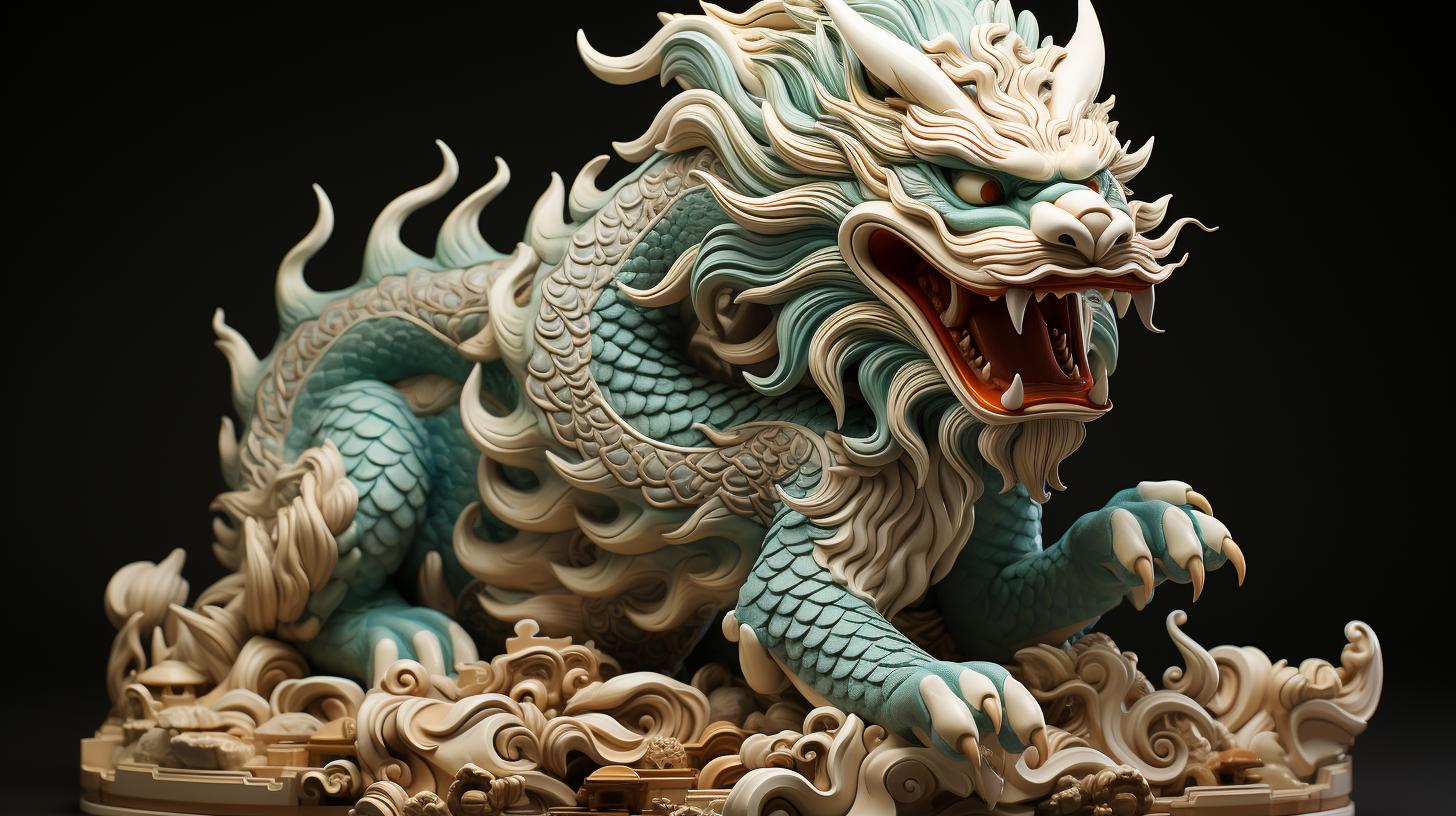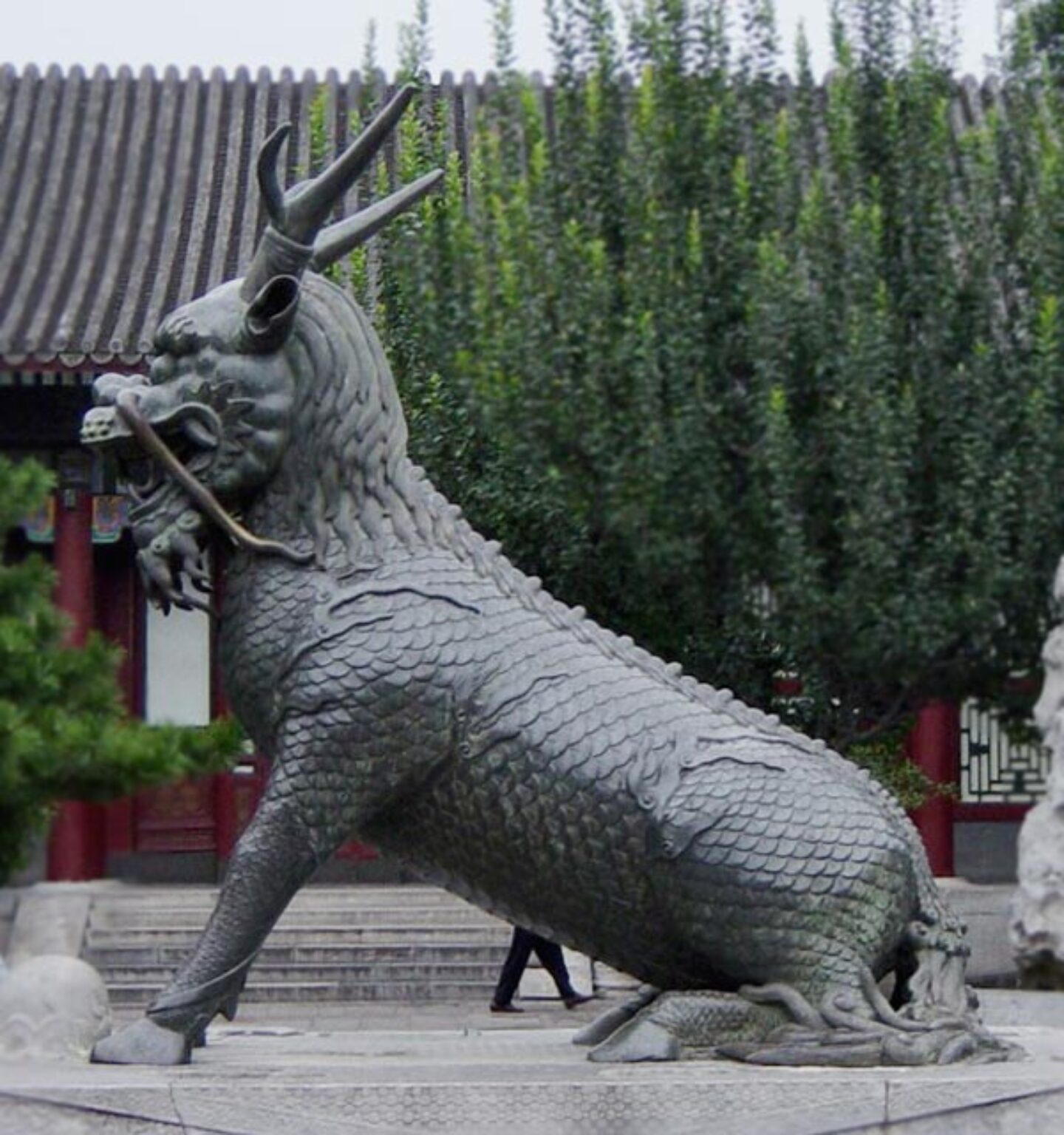The qilin is a famous creature in Chinese mythology, deeply rooted in the culture of China. People in China regard the qilin as a powerful mythical animal. This creature appears in many stories as a symbol of good luck, kindness, and peace. In China, the qilin holds great significance among mythical animals because it brings calm and happiness wherever it shows up.
Many believe the qilin visits China only during times of great peace and wise leadership.
Key Takeaways
-
The qilin is a legendary animal in Chinese stories. It stands for good luck, kindness, and peace. It shows up when there are wise leaders and peaceful times. People often connect it to famous wise people like Confucius. The qilin is gentle and does not hurt living things. It teaches people to be kind and fair. People use qilin pictures and statues for protection and harmony. They believe it brings blessings to homes and groups. The qilin is still an important symbol in art and festivals. It inspires people to respect wisdom and goodness in life.
Qilin in Chinese Mythology
Origins and Legends
The qilin is a well-known creature in Chinese mythology. Old stories say the qilin is gentle and brings good luck. People in China have shared stories about the qilin for thousands of years. The first written records are found in books like the Classic of Poetry and the Spring and Autumn Annals. These books are from as early as the 11th century BCE. The Zuo Zhuan, written in the 5th century BCE, also talks about the qilin.
Legends say the qilin first showed up in the Yellow Emperor’s garden. Many people think the qilin came to earth when times were good. The qilin often appeared when a wise leader ruled or a sage was born. For example, stories say a qilin came before Confucius was born. It carried a jade tablet with a message about him.
|
Time Period |
Historical Significance |
|---|---|
|
2697 BCE |
First appearance in the Yellow Emperor's garden |
|
11th-7th BCE |
Earliest written records in the Classic of Poetry |
|
481 BCE |
Documented in Spring and Autumn Annals |
|
Ming Dynasty |
Associated with giraffe sightings mistaken for qilins |
The qilin is one of the Four Benevolent Animals in Chinese mythology. The other three are the tortoise, dragon, and phoenix. Myths say the qilin is peaceful and does not hurt living things. Sometimes, it punishes people who do bad things. This shows the qilin stands for justice and wisdom. During the Ming dynasty, people called giraffes "qilin" when explorers brought them from far away. This shows how important the qilin is in Chinese culture and history.

Divine Messenger
The qilin is seen as a special messenger in Chinese mythology. Old books like the Zuo Zhuan call the qilin a spiritual guide. People thought the qilin could tell right from wrong. It would come to give messages from the heavens. The qilin often visited when great sages were born or died, like Confucius. These visits marked important times in history.
-
The qilin is in the Zuo Zhuan, showing its old roots in Chinese stories.
-
Stories connect the qilin to famous rulers and wise leaders, like the Yellow Emperor and Emperor Wu of Han.
-
Emperor Wu of Han said he caught a live qilin in 122 BCE, making the qilin even more linked to emperors.
-
Taoist stories say the qilin judges good and bad, punishing the wicked and rewarding the good.
-
Buddhist tales show the qilin as peaceful and holy.
-
In Japan, a creature called the Sin-you is like the qilin and judges guilt or innocence, showing the qilin’s influence outside China.
The qilin’s job as a messenger made it a sign of justice, wisdom, and moral guidance. People in China respected the qilin for bringing messages from the heavens. They believed it protected the land during peaceful times and under good leaders.

Qilin and China’s Culture
Symbolism and Meaning
The qilin is a very important symbol in China. People think it brings good luck, honesty, and peace. Many believe the qilin brings luck wherever it goes. Old stories say the qilin comes during peaceful times or when a wise leader rules. This makes the qilin a sign of good luck and a good ruler.
The qilin also stands for protection and wisdom. Its gentle ways show kindness to all living things. In China, families hope the qilin will bless their homes with luck and safety. The saying “Xi Huo Lin Er” means “Happy Capture Qilin Child.” This saying shows people want good children and family blessings. You can see the qilin in art, on buildings, and at festivals. It reminds people of these important values.
The qilin walks softly and does not hurt grass or bugs. This shows its peaceful heart. People learn to be kind and respectful from this.
In East Asia, the qilin is special too. In Japan, it stands for being pure and loving nature. In Korea, it protects forests and brings luck to those who honor it. These beliefs show the qilin’s meaning spread to other places, but it started in China.
Daniel Amos wrote about martial arts schools in Hong Kong and Guangzhou. They use the qilin dance at Lunar New Year. The dance brings blessings and keeps away evil. This shows the qilin is a strong symbol of luck in China. C.A.S. Williams says the qilin stands for long life, honesty, and wise leaders. These ideas have lasted a long time and still matter today.
|
Symbolic Meaning |
Description |
|---|---|
|
Good fortune |
Brings luck and happiness |
|
Virtue |
Stands for honesty and moral excellence |
|
Harmony |
Promotes peace and balance in life |
|
Protection |
Guards families and wards off evil |
|
Wisdom |
Linked to sages and wise leaders |
Auspicious Omen
The qilin is more than a lucky sign. People in China see it as a sign of big events. When the qilin appears in stories, it means a great sage is born or a fair leader rules. Old books like the Zuo Zhuan say the qilin came before Confucius was born. This showed a wise and good leader would soon come.
During the Ming Dynasty, explorers brought giraffes to China. People thought these animals were qilin. The Yongle Emperor was happy because he saw this as a sign of wise rule and good times. The qilin’s visit meant peace and luck would follow. In China, seeing the qilin at festivals, temples, or in art gives hope for a bright future.
The qilin is still known for luck and peace today. Martial arts schools do the qilin dance to bring luck and chase away bad spirits. The qilin bows to shrines and visits homes, spreading blessings and harmony. People think the qilin protects kids and sick people, so it is loved in China.
Many families put qilin statues by their doors for luck and to keep away harm.
The qilin’s story teaches us to be honest, kind, and wise. Its place in Chinese culture shows how much people respect this creature as a sign of luck and peace.
Appearance and Traits

Physical Features
The qilin is a special creature in Chinese stories. Many people call it the magical Chinese unicorn because it has one horn and seems magical. Old books like the 'Records of Jueyun' say the qilin is noble and gentle. It moves in a graceful way and looks beautiful. People often see it in mountain forests at night. The qilin drinks only clean spring water and eats sweet-smelling herbs. Artists show the qilin with a deer’s body, an ox’s tail, and horse hooves. Its skin can have scales like a fish or dragon. Sometimes its back glows with a soft light.
The qilin and the Chinese unicorn look alike, but the qilin’s look is more about its noble spirit than its shape.
A qilin never hurts any living thing. It always moves with respect and care. This makes the qilin a sign of peace and harmony.
|
Feature |
Description |
|---|---|
|
Horn |
Single, often curved, like a unicorn |
|
Body |
Deer-like, covered in scales |
|
Tail |
Similar to an ox |
|
Hooves |
Horse-like |
|
Special Traits |
Glowing back, gentle eyes, elegant posture |
Gentle Nature
The qilin is gentle and kind. Chinese stories say it is calm and peaceful. The qilin comes only when wise rulers or sages are around. It brings good luck and harmony. Stories say the qilin never steps on grass or eats living plants. It does not hurt any creature and shows respect for all life.
-
The qilin’s arrival means a good king is born.
-
It keeps safe those who are innocent and punishes those who do wrong.
-
Some stories say a qilin can stop wars or warn people about danger.
Wang Chong’s Lunheng says the qilin comes only when the land is full of goodness. People think the qilin is wise and kind. It stays away from danger and fights. The magical Chinese unicorn makes people want to be fair and kind.
The qilin teaches people to care about peace, fairness, and doing what is right.
Qilin in Art and Modern Life

Traditional Depictions
Artists in China have shown the qilin in many different ways. You can see it in paintings, carvings, and sculptures. The qilin is found in temples and palaces. It even appears on old coins. Artists use bright colors to show its scales and gentle eyes. The qilin’s body looks like a deer. It has one horn and some dragon-like parts. These features make it easy to spot in art.
A well-known artwork was made in the 15th century. It is called "Confucius and Buddha Cradling a Qilin." This painting shows the qilin as a sign of wisdom and peace. The scroll uses ink and color on silk. It is about 100 cm tall and 62 cm wide. Li Wenqing once owned it. Now, it is in the Freer Gallery of Art at the Smithsonian. The table below gives more facts about this artwork:
|
Aspect |
Details |
|---|---|
|
Artwork Title |
Confucius and Buddha Cradling a Qilin |
|
Period |
15th century |
|
Origin |
China |
|
Material |
Hanging scroll; ink and color on silk |
|
Dimensions |
100 cm x 62 cm |
|
Collection |
Freer Gallery of Art, Smithsonian National Museum of Asian Art |
|
Significance |
Shows the qilin’s role in chinese culture and art history |
This painting shows that the qilin stands for good luck and wisdom in chinese culture.
Popular Culture
The qilin is still important in chinese culture today. Statues of the qilin stand at doors of homes and temples. People think these statues bring luck and keep away bad things. At festivals, dancers wear qilin costumes and perform for peace and joy. The qilin is also in movies, cartoons, and games. These new stories help kids learn what the qilin means in chinese culture.
Many schools and martial arts groups use the qilin as a symbol. They want to teach kindness and honesty. The qilin’s picture is on posters, books, and clothes. People in China and other places see the qilin as a sign of hope and peace. Its story inspires young people and keeps its place strong in chinese culture.
The qilin is an important symbol in Chinese culture and stories. People think it shows virtue, harmony, and good luck. Stories about the qilin teach us to be kind and fair. Many families put up pictures of the qilin for luck and peace.
The qilin still makes people respect wisdom and goodness.
When we learn about the qilin, we understand more about China’s traditions.
FAQ
What does the qilin symbolize in Chinese culture?
The qilin stands for good luck, virtue, and peace. People believe it brings harmony and protects families. Many see the qilin as a sign of wise leadership and a peaceful time.
How does the qilin look?
The qilin has a deer’s body, a single horn, scales like a fish, and hooves like a horse. Artists often show it with bright colors and a glowing back. Its gentle eyes show kindness.
Why do people call the qilin a "Chinese unicorn"?
People call the qilin a "Chinese unicorn" because it has one horn and a magical look. The qilin’s gentle nature and special powers make it different from the Western unicorn.
Where can someone see the qilin today?
People can see qilin statues at temples, homes, and gardens. The qilin appears in art, festivals, and even movies. Many families place qilin images near doors for luck.
Is the qilin real or just a legend?
The qilin lives in stories and art. No one has found a real qilin. People use its legend to teach kindness, wisdom, and respect for life.









